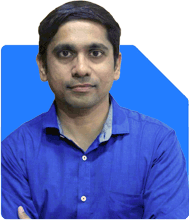Ramalingam Kalirajan |10906 Answers |Ask -Follow
Mutual Funds, Financial Planning Expert - Answered on May 01, 2024
He has an MBA in finance from the University of Madras and is a certified financial planner.
He is the director and chief financial planner at Holistic Investment, a Chennai-based firm that offers financial planning and wealth management advice.... more

Hi sir im guna 26/m last 1year im investing in mutual funds started at 5k per month and now im at 20 k in these funds Parag parik flexi cap 1000 Nippon small cap 500 SBI small cap 500 PGIM mid cap 1000 SBI contra 500 Quant ELSS & Mirae asset ELSS each 1000 Nippon index fund mix of Large,Mid,and small cap 15,000 Lumsum investment 50,000 In HDFC nifty 50 index fund Im planning for long horizon of 15 to 20 years
Remember, investing is a journey, not a sprint. Stay patient and disciplined, and resist the temptation to make impulsive decisions based on short-term market fluctuations. Instead, focus on the underlying fundamentals of your investments and the power of compounding to grow your wealth over time.
As you navigate the ups and downs of the market, continue to educate yourself, stay informed about economic trends, and periodically review your portfolio to ensure it remains aligned with your long-term goals.
With perseverance, prudent decision-making, and a well-diversified portfolio, you're well-positioned to achieve your financial aspirations and build a brighter future for yourself. Keep up the good work!
You may like to see similar questions and answers below
Hemant Bokil | Answer |Ask -Follow
Financial Planner - Answered on Apr 27, 2023
Ramalingam Kalirajan |10906 Answers |Ask -Follow
Mutual Funds, Financial Planning Expert - Answered on Apr 02, 2024
Ramalingam Kalirajan |10906 Answers |Ask -Follow
Mutual Funds, Financial Planning Expert - Answered on May 15, 2024
Ramalingam Kalirajan |10906 Answers |Ask -Follow
Mutual Funds, Financial Planning Expert - Answered on Jul 22, 2024
Ramalingam Kalirajan |10906 Answers |Ask -Follow
Mutual Funds, Financial Planning Expert - Answered on Dec 19, 2025
Nayagam P P |10859 Answers |Ask -Follow
Career Counsellor - Answered on Dec 19, 2025
Ramalingam Kalirajan |10906 Answers |Ask -Follow
Mutual Funds, Financial Planning Expert - Answered on Dec 19, 2025
Ramalingam Kalirajan |10906 Answers |Ask -Follow
Mutual Funds, Financial Planning Expert - Answered on Dec 19, 2025
Ramalingam Kalirajan |10906 Answers |Ask -Follow
Mutual Funds, Financial Planning Expert - Answered on Dec 19, 2025
Radheshyam Zanwar |6751 Answers |Ask -Follow
MHT-CET, IIT-JEE, NEET-UG Expert - Answered on Dec 19, 2025
Radheshyam Zanwar |6751 Answers |Ask -Follow
MHT-CET, IIT-JEE, NEET-UG Expert - Answered on Dec 19, 2025
Samraat Jadhav |2514 Answers |Ask -Follow
Stock Market Expert - Answered on Dec 18, 2025
Reetika Sharma |432 Answers |Ask -Follow
Financial Planner, MF and Insurance Expert - Answered on Dec 18, 2025
Reetika Sharma |432 Answers |Ask -Follow
Financial Planner, MF and Insurance Expert - Answered on Dec 18, 2025
























